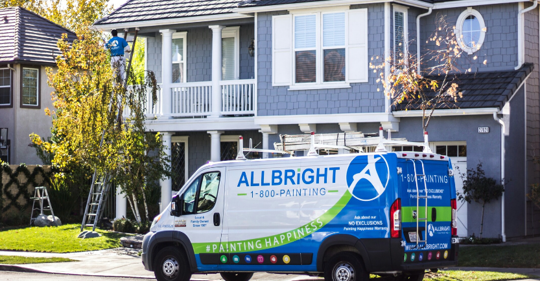Nothing helps give your home a facelift quite like a fresh paint job. In fact, if you are thinking about putting your house on the market, a fresh coat of paint can increase your home's market value and make it more attractive to potential buyers.
Painting the exterior of your house is not an easy task, so you might be wondering how long it will be before you need to repaint. In this blog, our experts will help you understand how long exterior paint will last by giving you insider knowledge about the do's and don'ts of exterior paint to ensure your home gets the most out of its makeover.
How Long Does Exterior Paint Last?
In short, there is no definite answer. Many factors go into the longevity of your paint job. However, on average, a good paint job will last about seven years, but that will be contingent on the quality of paint and prep before the paint job.
Factors That Cause Your Exterior Paint to Fail
Low-Quality Paint
Although purchasing paint at a lower price point might seem like you're saving money, you could spend more in the long run. Lower-quality paint does not provide the same durability or results as the high-quality option. High-quality paint contains fewer fillers and stronger pigments, enhancing the paint job's longevity and vibrancy.
Due to the lack of fillers in high-quality paint, it will take a smaller amount to finish the job. This happens due to the dry film thickness, meaning less paint will evaporate during the drying process. For instance, if the paint is applied at four mils wet, it will dry at 2 to 2.5 mils. The amount left when it is dry depends on the amount of solids in the paint. The higher the solids, the less evaporation will occur when drying.
Poor Prep
Preparing your home is a crucial step in the repainting process. While it can be easy to blame the failing paint on the quality of the paint, poor preparation can often be the culprit. Clean the surface before painting to eliminate dirt, oils, and pollution that built up over time. Using a power washer is the most effective way to do this. After the surface is dry, sand and scrape away the remaining imperfections. Finally, your home might require some caulk to reseal spots before priming. Although more expensive, polyurethane caulks are durable, flexible, and best adhere to most surfaces. The next step is to prime and then paint!
Weather Conditions
Fluctuation in temperatures can cause wood to expand and retract, weakening the bond between the paint and wood. Once the protective paint film cracks, it allows moisture to enter between the wood and paint, causing it to peel. This is why high-quality paint is the better investment due to its enhanced durability.
What Kind of Paint Should I Use?
Due to the fluctuation in temperature in Southern California, we recommend 100% acrylic water-based paint. This paint is designed to flex with the expanding wood, taking a long time to show signs of damage. After applying a quality primer, we suggest applying two solid coats of paint, which provides the best dry film thickness. The thicker the coating, the more protection you have against film breakage.
More Questions About Exterior Paint?
If you have more questions about exterior painting, our experts at ALLBRiGHT PAINTING are ready to take your call! (661) 464-0771

